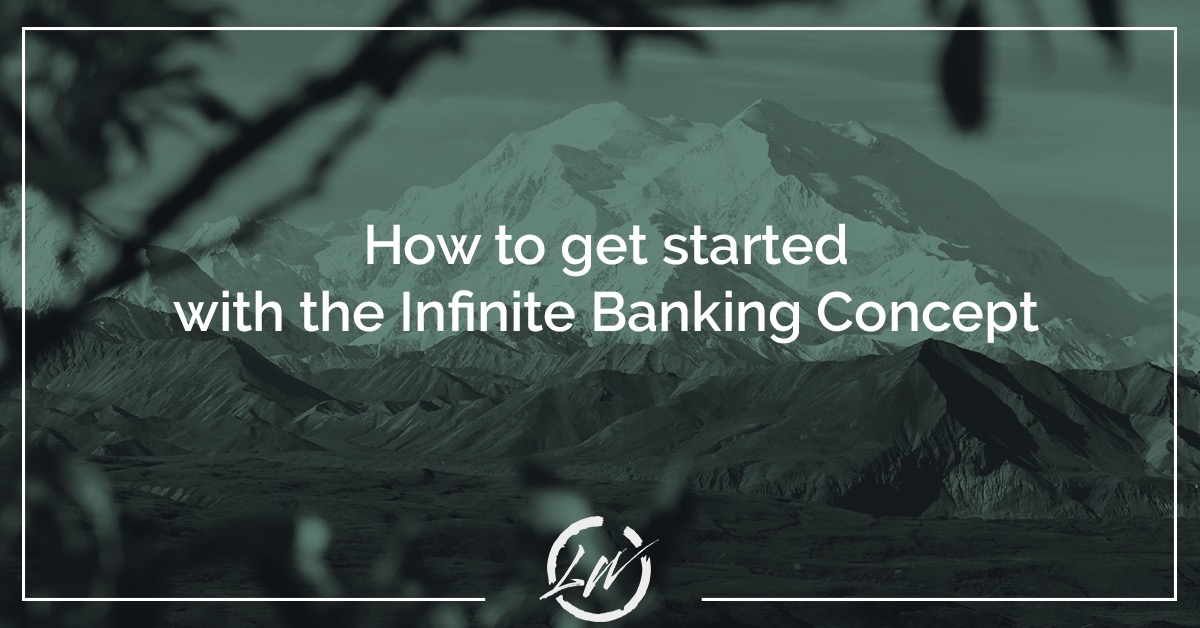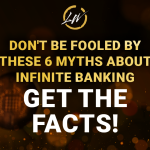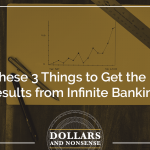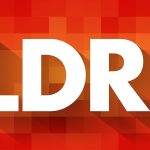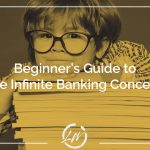Much of the success of the infinite banking concept can be attributed to the release of Nelson Nash’s book, Becoming Your Own Banker, first published in 2000 (see a chapter by chapter summary of the book here.) Nash popularized and further defined the wealth-building approach that he had been practicing for 20 years and that had been used by wealth builders since the late 1800s. As a result, many people have transformed their financial situations by implementing Nash’s concept. Reading the book alone can seem daunting for infinite banking beginners, and it can be challenging to understand how to get started with the infinite banking concept. That’s why we have provided a guide below.
Infinite banking for beginners
Before we dig into the steps on how to get started with infinite banking, it is important to gain a general understanding of the infinite banking concept.
Essentially, infinite banking uses life insurance policies to become your own banker and establish your own private family banking system. Instead of using a third-party bank to aid in your finances, you will create a fund you can use and borrow from as you please. This is done with whole life insurance, more specifically, with dividend-paying whole life insurance.
Most people choose term life insurance policies, which last for a pre-defined period and they have no cash value. However, if the insured person dies during the term they pay out the face value of the policy. Because of this, the policies are more affordable than whole life policies.
Whole life insurance policies can cost more but they offer more value. They typically last for the entire duration of an individual’s life. And during this time, you can leverage a policy to help you have total control over your finances.
Dividend-paying whole life insurance policy
When you purchase a dividend-paying whole life insurance policy, the cash value within the policy grows tax-free, and you can borrow against what you have paid into it. Your family and your estate are not limited to waiting until after your death to access your money, like with term insurance policies. The growth of the policy is also not dependent on the IRS or the federal government. Moreover, you may generate additional growth from the insurance company through dividends.
Borrowing money from your policy can accrue interest; however, you are the one that earns the interest. This mechanism is used by banks and other financial institutions. With infinite banking, you are using the same tools banks use but putting yourself in control, essentially becoming your own bank.
Now that we have defined the concept, let’s explore how to begin your infinite banking journey.
Understanding cash value
One of the first things to look at is cash value and the different types of cash value insurance.
When you purchase a policy, a portion of the premium goes to buying the death benefit and pays for administration fees. The rest of the premium is rolled into the policy as cash value. The cash value varies depending on the type of insurance you have.
Variable life insurance and universal life insurance offer similar features to whole life insurance, however, you have a guaranteed rate of return, and opportunities grow more through dividends with whole life insurance. In addition, the cash value is not dependent on the performance of investments, which is what makes it more ideal for infinite banking.
Types of whole life insurance
There are a few types of whole life insurance, which grow in different ways. They all offer a guaranteed rate of return, but only certain ones allow you to participate in dividends.
As the name suggests, with non-participating whole life insurance, you are not participating in investment activities. You still have the death benefit, guaranteed rate of return, and level premiums, but you may not see as much growth. However, it has a lower cost and lower risk than other options.
Participating-whole life insurance is issued by a mutual insurance company and allows for more growth through dividends. Dividends are a sum of money given to members of a company or shareholder. With this option, you get more money if the investment does well. However, this also makes it a higher risk since dividends are not guaranteed and draw higher premium rates. Nonetheless, it allows the cash value to grow more substantially than non-participating whole life insurance. And this growth can be used to pay your premium or buy more insurance through paid-up additions.
Paid-up additions riders
Paid-up addition riders allow the policyholder to add benefits to an existing policy. If you use the extra money received from dividends to buy this additional coverage, you will increase the likelihood of growth in your policy.
With whole life insurance, there is already guaranteed growth fixed into the policy, but now there is potential for growth of the paid-up addition riders. The overall growth is comparable to mutual funds or retirement plans, making the policy function more as a way to build wealth rather than use simply as life insurance.
For these reasons, paid-up additions are crucial to the success of infinite banking. Therefore, it is essential to partner with an insurance advisor who is well-versed in paid-up addition riders.
Understanding the Hierarchy of Wealth
The Hierarchy of Wealth is a framework that outlines how people can achieve financial freedom. It outlines the different tiers of wealth and the needs and goals you must have control over before moving to higher tiers.
Tier one, or the foundation of the hierarchy, focuses on the tools you use to get the most basic things you want and need (e.g., food, mortgage payments, car purchases, etc.). In this stage, it is crucial to understand how your cash flows and determine ways that you can control this. Essentially, you are making a foundation that will allow you to begin your journey towards financial freedom.
The next tier is focused on control. Here, you can actively find ways to put more money in your pocket. An excellent way to do this is through a whole life insurance policy. The goal here is to find ways to guarantee wealth and control of money. With whole life insurance, you are guaranteed a fixed rate of return that grows tax-free. Therefore, access to cash is not limited to after your death or under the government’s watchful eye.
Once you control your cash flow and assets and have maximized benefits, you can then move on to tier 3. It involves investing in something that is not guaranteed to give you a return but picking something with a safety net to minimize your loss, such as a hard asset. A hard asset has inherent value and holds that value long-term. An example of this would be real estate. For example, if you can take a loan from your policy to purchase real estate and rent that to someone, the person renting would be giving you a stream of a monthly income that is essentially guaranteed.
Finally, the last tier involves making investments that are not guaranteed and are likely riskier than those in previous tiers. However, if successful, they can be pretty profitable. This can include things such as mutual funds, stocks, and cryptocurrencies.
The hierarchy of wealth can help you maximize your wealth more safely. Many people put the foundation of their wealth in risky endeavors; while profitable, your financial freedom and wellbeing are uncertain. By placing your foundation in more guaranteed investments, like whole life insurance, you can maximize your wealth without the fear of being financially ruined.
How to get started with the infinite banking concept at Living Wealth
Mentioned above are important things to consider when getting started with infinite banking. It is crucial to understand what you are getting into and the benefits and risks of your decisions. However, if the concept is still difficult to grasp, a great way to get started would be to talk to professionals in the field, and Living Wealth is here to help you begin your journey.
The Living Wealth team is there to guide you through your journey to financial freedom. Our website is filled with great infinite banking resources to get you started, and our team of experts is there to help you every step of the way. Here are the infinite banking learning resources for beginners. They are great next steps for learning how to get started with infinite banking:
- Our free infinite banking concept beginner’s course
- Our free infinite banking ebooks
- Read our blog
- See our training videos
- Book a free call with our infinite banking experts
- Subscribe to our infinite banking podcast called Dollars and Nonsense.


